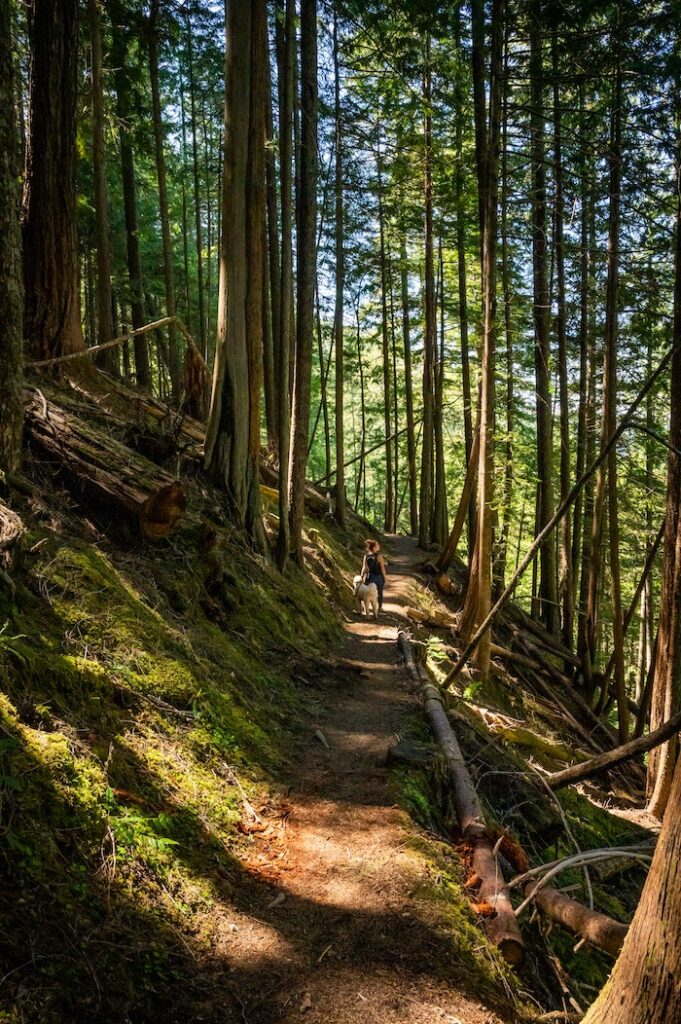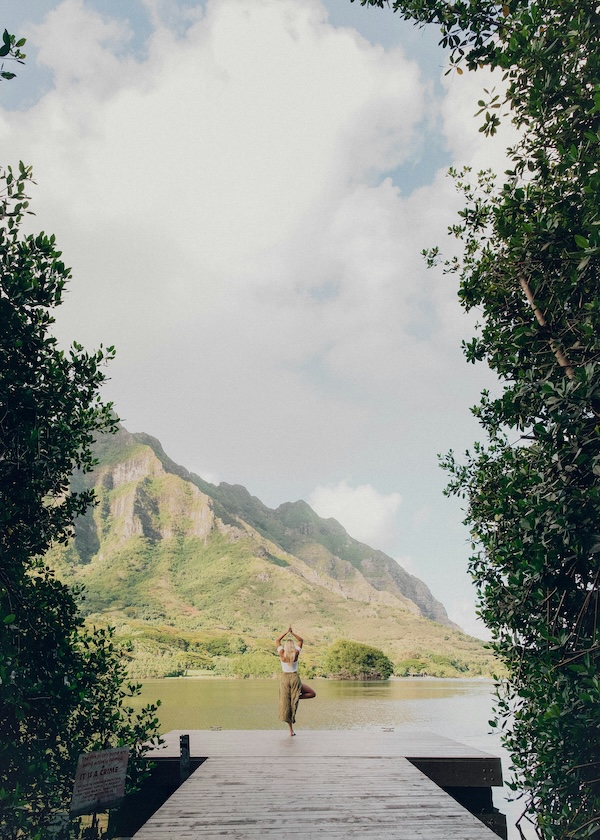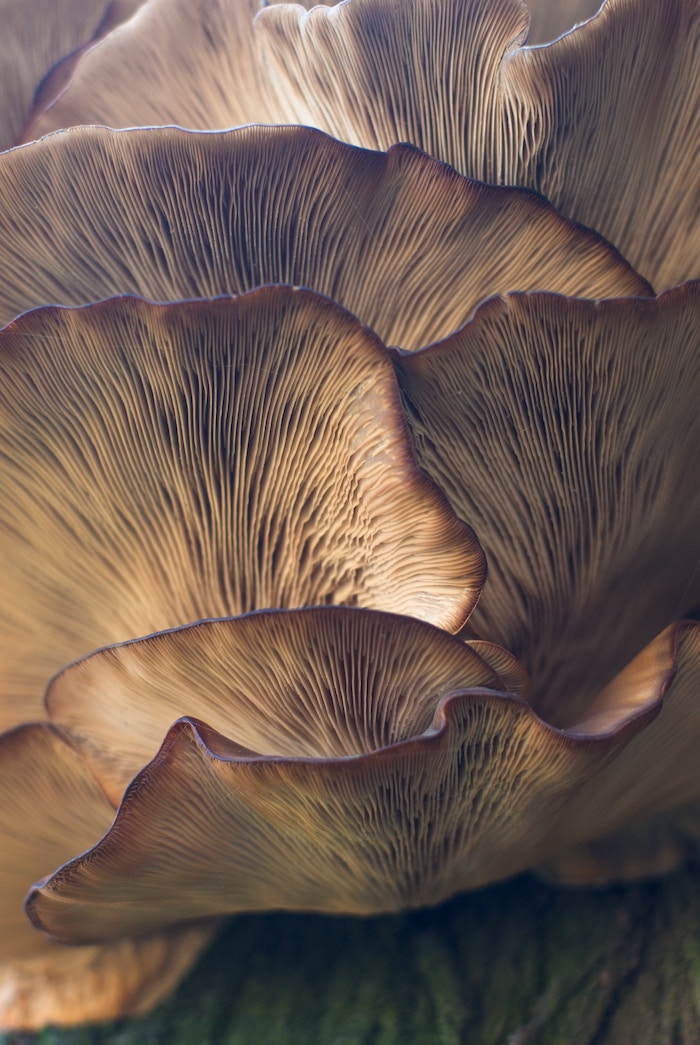
When was the last time you spent real, focused time outdoors? (And I don’t mean drinking a mimosa on a patio or jogging through the park with headphones on.) In our fast-paced, digital world, it’s rare for adults to spend intentional time engaging with nature. In fact, the average American adult spends 93% of their time indoors. My favorite way to combat our always-indoors culture and add some intentionality to your days is forest bathing, an ancient Japanese mindfulness exercise. Here’s how to try forest bathing for yourself!
What Is Forest Bathing?
Chances are, you’ve practiced forest bathing without even realizing it! It’s an ancient Japanese process (called shinrin-yoku in Japanese) that involves connecting with nature through all five senses. It’s not hiking, which has an end goal. And it’s not meditation, in which you turn inwards. Instead, it’s an exercise in expanding your awareness and tapping into the world around you.
And don’t worry, this isn’t an episode of Naked and Afraid. There’s no actual bathing involved, just connecting with nature in whatever way makes you most comfortable. You can try it in your backyard, a local park, or on top of a mountain – wherever you’re drawn to!
What Are The Benefits of Forest Bathing?
It’s no secret that spending time outdoors is good for you. Studies have shown that exposure to nature can help you recover from stress and mental fatigue, and it can improve your physical health in the long run. On the other hand, time spent indoors staring at screens can have a negative effect on your mental and physical health. Unfortunately, in our cordless world, it’s easier and easier to let our digital lives creep into our outdoor time.
Forest bathing requires that you put your devices away, minimize distractions, and truly experience your outdoor time to the fullest. That way, you can reap all the positive benefits of exposure to nature without the negative effects of our digital world.
Some other benefits to forest bathing include…
- Decreased anxiety
- Decreased risk of depression
- Improved sleep patterns
- Lower cortisol levels
- Increased sense of purpose in your community
In short, there are no downsides to forest bathing, only benefits. Even if you only practice it for a few minutes a day or once a week, it’s better than spending that time mindlessly scrolling Instagram or worrying about work.
How to Try Forest Bathing
Fortunately, there are very few barriers to trying forest bathing for yourself; just go outside, find some greenery, and embrace it! Here’s how to start:
- Find the right space. You want an outdoor space without paved paths, fences, or other barriers. If you can, find a space that isn’t super busy or loud. This could be a state park, large community garden, or even your own backyard. You might need to visit your local park early in the morning or on a weekday to find some peace and quiet.
- Put your phone away. Bring it with you just in case, but turn it off or on ‘do not disturb’ so you won’t get distracted. Even a single notification can pull you out of the forest bathing experience.
- Start to wander. Walk in whatever direction you’re drawn towards. Don’t try to reach a certain destination or find anything in particular. Just wander! If you see something interesting, follow your curiosity. If you feel like stopping and sitting a while, do that. There’s no map or timeline.
- Pay attention to your senses. What do you see? What do you smell? What does the air feel like? Can you hear any small animals or running water? Tap into these senses and sit with them.
- Reach out and touch nature. Place your hands on the bark of a tree. Kick off your shoes and feel the dirt underfoot. Dip your fingers into a stream. Physical touch is one of the best ways to connect with nature, especially in a world where we don’t engage with it much.
- Check in with yourself. What kinds of emotions come up as you engage with nature? Does a pinecone bring back memories of walking in the woods with your family? Does the sound of a robin remind you of your mom? Use your outer experience to turn inwards.
In the beginning, you probably won’t have the stamina to forest bathe for long. Start with short intervals, and gradually work your way up to 30 minutes, an hour, or even two hours without distractions.
How to Practice Forest Bathing in a City
Of course, not everyone has access to state parks or wild areas. If you live in a city, find a park or even just a patch of grass and trees to forest bathe in. (College campuses are a great place to look!) The more you practice spending time in nature, the more you’ll notice nature; pretty soon, you’ll find spots to forest bathe everywhere!
How to Book a Forest Bathing Tour
If you’re traveling, look into forest bathing tours! You can obviously book them in Japan, but plenty of other countries. There are tons of spas in the US that offer guided tours for beginners.
3 Forest Bathing Exercises to Try
If you’re having trouble slowing down your mind and wandering aimlessly, try one of these three exercises:
1. Engage with a single leaf.
Find a leaf (or an acorn, or a stone) and sit with it in your hands. Use your senses to engage with it. What does it smell like? What does it feel like? What does it look like? Look closely! What kinds of emotions or memories come up as you sit with it? Pay attention to any reservations that arise about the exercise. It’s not often we force ourselves to truly focus on one non-digital object, but this is great practice.
2. Connect with a tree.
No matter where you live, you can probably find a tree that’s been alive longer than you have. On your walk, find a large tree and place both hands on its bark. Pay attention to the texture, the small insects crawling along its surface, and the way it smells. Imagine everything the tree might have seen and experienced. This will help you slow your mind and appreciate the individual organisms in the forest.
3. Breathe with the breeze.
The forest is a fantastic guide for a breathing exercise. Sit or stand in the forest, close your eyes, and listen to the sounds of the wind in the trees. Coordinate your own breathing with that of the world around you. Listen closely to the ways the wind interacts with the leaves and branches.
Forest Bathing Books
Want to learn even more about forest bathing? Check out these resources!
Your Guide to Forest Bathing by M. Amos Clifford. This book is by one of the world’s top experts in forest bathing. It breaks down the benefits and the practice in a really clear yet detailed way.
Braiding Sweetgrass by Robin Wall Kimmerer. While not about forest bathing exactly, this book is a love letter to the natural world and an invitation to experience the flora and fauna all around you. Plus, it includes a peek into indigenous customs and wisdom about the natural world.
Forest Bathing by Dr. Qing Li. Not only is this book a great guide to forest bathing, but it’s also beautiful. It features over 100 photographs to get you inspired and excited to spend time in nature.
Writing Wild by Tina Welling. This book is a practical guide to combining the concept of forest bathing with a writing or journaling practice. If you already love journaling, I highly recommend it!
Want to practice more mindfulness in your everyday life?
It all comes down to being intentional with your time. Click here to enroll in my FREE class on creating intentionality and avoiding burnout in your life and business.






+ show Comments
- Hide Comments
add a comment